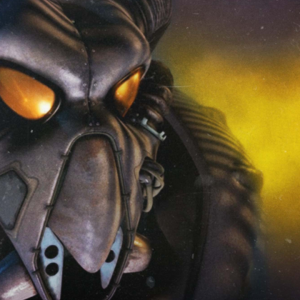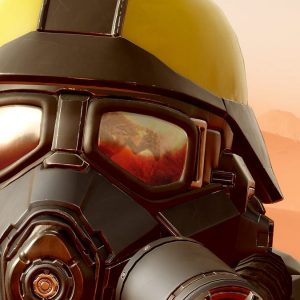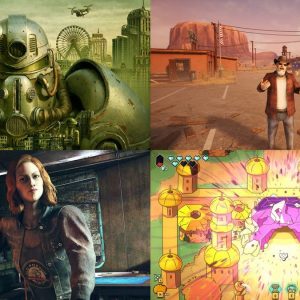Cocoon opens with a beam of light. It descends from the sky, then impacts a mountain, illuminating a series of runes carved into the rock, then trails it down to a cocoon, which undulates and then opens. A tiny winged creature pops out. I didn’t know who my new friend was or what he wanted, but I’d be spending the next hour with him. During that hour, Cocoon constantly surprised and delighted me.
Cocoon defies easy description. It has no narrative to speak of, no dialogue, spoken or written, no text to read, and few cutscenes. But that doesn’t mean there isn’t any story. As I navigated through the craggy rocks and white sand of the starting area, I was interacting with ancient technology: moving platforms, disappearing stairs, even the cocoon my character emerged from. What was it for? Who made it? I didn’t know, but I wanted to find out.
Cocoon is a puzzle game with limited interaction. I could flip switches and grab and carry objects – but that was all initially. I’d use a button to open a door, activate a platform, or ride an elevator. But soon, things started to get more complicated. I’d have to ride a platform a little way and get off to maneuver another platform into place or activate a series of switches to turn on a circular platform. Cocoon had been delightful up until that point, but the first time I used that platform, it blew my mind.
I flew up and out of the world I’d been inhabiting, which was actually just an orange orb. The world I’d been exploring, which had and seemed so large and wondrous, was something small I could carry with me. However, doing so upset a large mechanical moth. More on him later.
I could use the orb to power platforms and open doors. Once, I had to drop it into a tube, following it and switching segments of the tube when necessary to move it in the right direction. Other times, I had to leave the orb behind and solve a puzzle, turning a moving column to show me the answer to a puzzle in which I had to activate switches in a certain order. That got me a little drone.
When I sat the orb down on a switch inside a fountain, a pool of water reflecting the world in the orb appeared, and I could re-enter it with my drone to open up new areas.
“
Now seems like a good time to talk about that moth. He was the orb’s guardian, and he wasn’t happy with me. My fight against him wasn’t ordinary. If he caught me, I was thrown out of the orb and had to restart the fight. Our battle was like an intricate dance. I would dodge his attacks, waiting for my turn to strike with an explosive orb that I could pull from the ground. I couldn’t lose the fight, but I couldn’t make a mistake, either.
Winning the battle unlocked the orb’s power. Carrying it would spawn bridges of light beneath me, opening the way to new areas. Sometimes I had to leave the orb behind and manipulate switches to change the bridges when I couldn’t see them. Other times I had to activate a switch and take it to a moving platform I could stand on while I carried it. Cocoon had me saying “wow” out loud and laughing while I was solving puzzles because of the way the orb let me manipulate the world. And then I got my second one.
This orb was green to my first’s orange, an overgrown marsh to the first’s rocky mountains. I could take my orange orb into my green orb and use it to make bridges of light. Or I could take my green orb into my orange orb to power platforms. Each orb unlocked new paths in the other. I could even leave one inside the other if I had to return to the overworld and carry them somewhere else. Puzzles could get tricky. It’s easy to use the orange orb to solve puzzles inside the green orb, but sometimes solving a puzzle meant taking it out of the green orb, placing it down in the overworld, going to the next traversal point inside the green orb, and then returning to the overworld to get it.
“
Cocoon made me feel like I was constantly discovering new things, like the time I realized the order for a switch puzzle because it was laid out on the light bridge I created with the orange orb. And each new ability I gained allowed me to explore new areas in both the overworld and the orbs I already had.
Another boss fight awaited me in the green orb, of course. This time, I was up against a squid, but the fight was much more complicated. I had to goad him into charging me to break the rocks concealing my explosive orb, then ride it through the air while I dodged attacks that wouldn’t be out of place in a bullet hell game, and finally drop it on him. I loved how different it was from the moth, but I loved the ability I got for my green orb even more.
Now I could ascend and descend through rocks, rendering them either solid or ethereal. The demo ended shortly after that, but I’d already gotten enough of a taste to be hooked.
Cocoon is excellent at that. Every time I thought I knew the game was going to zig, it zagged into places I would have never dreamed of. This is a beautiful game – not just in its art and music but in how it asks you to let go of expectation and revel in the sense of discovery. I’m excited to discover what comes next – and all the orbs I’ll be pondering in the future.
























